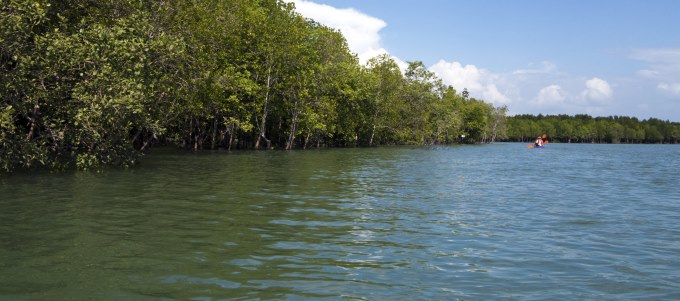 On July 10, the U.S. Geological Survey released a report — Ecological Health in the Nation’s Streams, 1995-–2003. Chemical and physical properties can provide a picture of stream health, but biological indicators can provide a more comprehensive perspective. Species’ health can represent the cumulative effects of physical and chemical changes to an environment, and they are a direct measure of whether a stream is meeting an aquatic-life designated use. According to the report, 83% of assessed streams had at least one altered biological community, and 86% of streams had modified annual high- or low-stream flows.
On July 10, the U.S. Geological Survey released a report — Ecological Health in the Nation’s Streams, 1995-–2003. Chemical and physical properties can provide a picture of stream health, but biological indicators can provide a more comprehensive perspective. Species’ health can represent the cumulative effects of physical and chemical changes to an environment, and they are a direct measure of whether a stream is meeting an aquatic-life designated use. According to the report, 83% of assessed streams had at least one altered biological community, and 86% of streams had modified annual high- or low-stream flows.
The Northeast–Midwest Institute and the Water Environment Federation on July 19 co-hosted a public briefing on the National Water Quality Assessment Program’s data. See a PDF of the presentations here.
 An American Rivers report, also released in July, discusses one way to improve urban stream health. Daylighting is an approach that involves uncovering and restoring buried urban streams and headwaters. According to the U.S. Environmental Protection Agency, daylighting can be considered a green infrastructure practice. Like other green infrastructure practices, daylighting can improve stormwater drainage and water quality while reducing flooding. It can also improve nutrient retention and has economic benefits.
An American Rivers report, also released in July, discusses one way to improve urban stream health. Daylighting is an approach that involves uncovering and restoring buried urban streams and headwaters. According to the U.S. Environmental Protection Agency, daylighting can be considered a green infrastructure practice. Like other green infrastructure practices, daylighting can improve stormwater drainage and water quality while reducing flooding. It can also improve nutrient retention and has economic benefits.
The report, Daylighting Streams: Breathing Life Into Urban Streams and Communities, includes definitions, funding sources, case studies, recommendations, a policy analysis, an outline of the benefits, and more. Read more.














